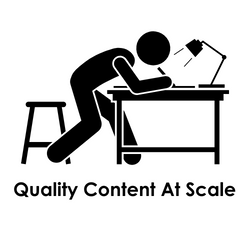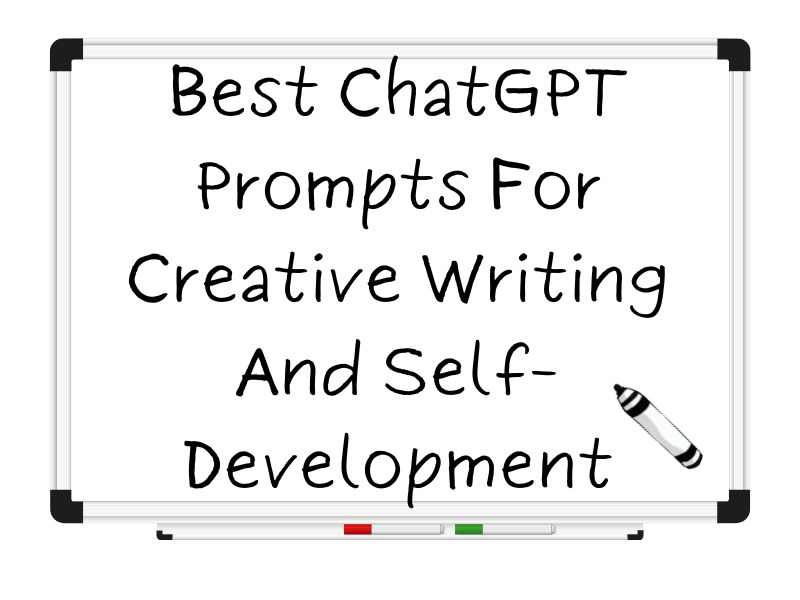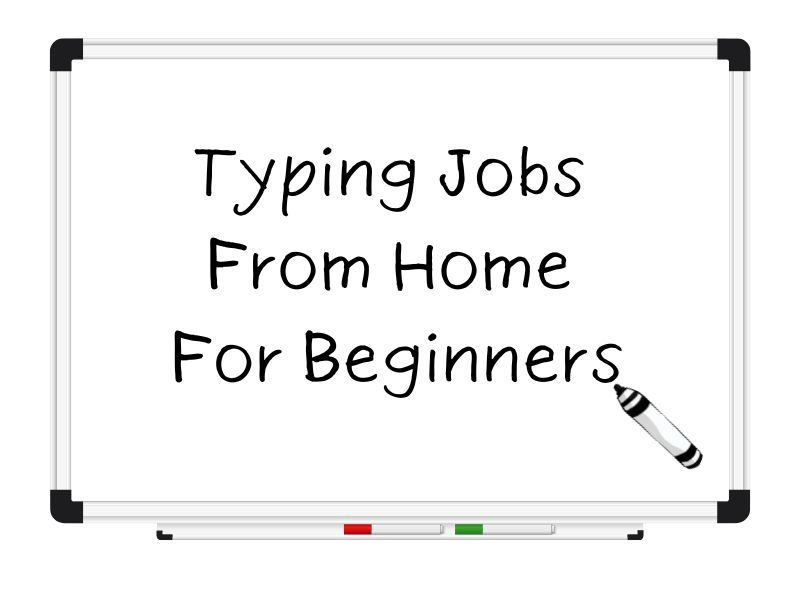Are you struggling with how to start your next blog post? Do you find yourself going off on tangents and losing focus? A solution to this writer’s block might be as simple as creating a blog post outline. An a blog outline helps provides structure, organization, and ensures that your writing stays on topic.
It can save time during the writing process and improve the flow of your article. In this post, we will explore how to create an effective blog post outline, including tips for outlining like a pro! Keep reading to learn more about creating a better blog post using an organized approach.
Table of contents
How to create a blog post outline for a beginner?
To create a blog post outline, begin by creating a headline that captures readers’ attention and summarizes the topic. Then, provide an introduction with background information on the subject matter. Divide the body of your post into sections or subsections focused on different aspects of the topic. Add examples and other media to make your content more engaging, and wrap up with a summary of your main points and a call to action for readers. With this approach, you can create compelling blog posts that engage readers and inspire them to take action.
Understanding The Importance Of Creating A Blog Post Outline
Creating a blog post outline is crucial because it provides structure and organization, helps to stay on topic and avoid tangents, saves time during writing, and improves the overall flow of the article.
Provides Structure And Organization
Creating a blog post outline is essential for providing structure and organization to your writing. By outlining the main points of your article, you can ensure that each section flows logically into the next, creating a coherent and engaging read for your audience. This also helps you stay on topic and avoid getting sidetracked by irrelevant tangents.
Not only does an outline help with organizing thoughts, but it can also save time during the writing process. When you have a detailed plan in place, you won’t waste precious minutes trying to figure out what should come next in your piece. Additionally, an outline can improve the flow of your entire article since it provides clarity on how key ideas will be developed throughout the piece.
Overall, taking the time to create an effective blog post outline is crucial for producing high-quality content that resonates with readers while saving yourself time in the long run.
Helps To Stay On Topic And Avoid Tangents
An important aspect of creating a blog post outline is the ability to stay on topic and avoid tangents. By having a clear plan in place, writers can ensure that their content remains focused and relevant to their target audience. This is particularly important for SEO purposes, as search engines favor content that provides valuable information without straying too far from the post title main topic.
Additionally, an effective blog post outline helps writers save time during the writing process. They can refer to their detailed outline to keep themselves on track rather than constantly going back and editing unnecessary sections. By staying organized, writers can also improve the flow of their article, making it easier for readers to follow along and engage with the content.
Overall, taking the time to create a solid blog post outline sets the foundation for a successful final to write a blog post. It helps bloggers write better posts faster by providing structure and organization while keeping them focused on key points related to their topic or niche.
Saves Time During Writing
Creating a detailed blog post outline can help to save time during the writing process. By organizing your thoughts and key points beforehand, you won’t waste valuable writing time trying to figure out what information to include. According to research, bloggers who use outlines tend to write longer posts more quickly and with better quality than those without one.
Furthermore, having an outline helps you stay on topic and avoid going off on tangents. When you have a clear idea of what you want each section of your post to cover, it’s easier to stick to the main point and not get sidetracked by irrelevant details. This also makes it easier for readers who are looking for specific information within your call to action or post. By saving yourself editing time later on from rambling content or writer’s block due ingesting too many directions at once, an outline is invaluable in improving the flow of your article while providing structure and organization essential for search engine optimization purposes as well as keeping readers engaged with relevant subtopics supported by data where possible.
Improves The Flow Of The Article
Having a well-structured blog post outline can improve the flow of your article. When you have a clear understanding of what you want to say and how to present it, your writing will feel more natural and cohesive. A good flow helps readers stay engaged with your content, making them more likely to read until the end.
One way to achieve better flow is through section headings. Headings break up large blocks of text into smaller, easily digestible segments. They provide a roadmap for readers and help guide them through your content while keeping their attention focused on what’s important.
Additionally, outlining key takeaways within each section allows for smooth transitions between points. By connecting each idea in a logical fashion, readers can follow along easily without feeling lost or confused about the topic at hand. Overall, improving the flow of an article through an effective outline ensures that readers have a positive experience with your content from start to finish.
Organizing Your Main Points
Organizing the main points is vital for creating a well-structured blog post outline. By identifying your topic and audience, choosing the best content format, deciding on your post’s angle, outlining key takeaways, and building out your sections in a logical flow, you can ensure that your readers will enjoy reading through to the end of nice post. Keep reading to learn more about how to create an effective blog post outline.
Identify Your Topic And Audience
To create a successful blog post outline, it is essential to identify your topic and audience. Start by brainstorming topics that you are knowledgeable about or passionate about. Research the market demand for those topics through keyword research and competitive analysis.
Once you have identified your topic, determine who your target audience is. Who do you want to reach with your blog content? What interests them? Understanding your audience will help you tailor the tone, language, and messaging of your blog post to meet their needs and expectations.
By identifying both the topic and audience for your blog post early on in the outlining process, you can ensure that all subsequent sections of the content will be targeted towards delivering relevant information to readers looking for answers related to the chosen subject matter.[KEYWORDS: key points, keyword research]
Choose The Best Content Format
Choosing the best content format is a crucial step in creating an effective blog post outline. Knowing your audience and their interests will help determine which format to use, whether it’s a listicle, how-to guide, case study, or personal narrative. Understanding the purpose of your next blog post can also aid in selecting the most appropriate format that aligns with your overall goals.
Incorporating relevant studies, data, and additional sources into your outlined sections can add credibility to your blog post and make it more informative for readers. For example, including statistics and expert opinions may be more suitable for a data-driven article than a personal anecdote. Thus, carefully selecting the right content format that aligns with your topic and audience will ensure that you create compelling content that resonates with readers.
Remembering these important aspects while choosing the best content format for your next blog post outline will help you write better-structured articles that effectively connect with readers on an emotional level while conveying valuable insights or knowledge.
Decide On Your Post’s Angle
When deciding on your post’s angle, it is important to consider the unique perspective or approach you can bring to the topic. This can be based on personal experience, research, or even an opposing viewpoint. By presenting a new angle, readers are more likely to engage with your content and see it as a valuable resource.
Additionally, considering your target audience is crucial in determining the best angle for your blog post. What information or insights would appeal to their interests and needs? Understanding this can help you craft a more compelling and relevant blog post that resonates with your readership.
Overall, taking the time to decide on your post’s angle can set the foundation for a successful blog post that delivers value and engages readers. With careful consideration of both unique perspectives and audience interests, you can create content that stands out in a crowded online space.
Outline Key Takeaways And Build Out Your Sections
In conclusion, creating a blog post outline is an essential step in the writing process that can help save time and improve the overall quality of your content. By organizing your main points and outlining key takeaways, you’ll be able to build out each section with clarity and purpose.
Remember to keep it simple, consider your audience, and incorporate relevant sources for added value. With this guide as your roadmap, you’ll be well on your way to crafting exceptional blog posts that attract readers and drive organic traffic to your site!
Tips For Effective Blog Post Outlining
Some tips for effective blog post outlining include keeping it simple and concise, using descriptive headings, incorporating relevant studies and data, considering your audience and their interests, and reviewing your outline for coherence and flow.
Keep It Simple And Concise
When creating your blog post outline, it’s important to keep it simple and concise. This means avoiding unnecessary jargon or complex sentence structures that could confuse your readers. Instead, aim for clear and direct language that effectively communicates your message.
One way to achieve simplicity is by using bullet points to outline the key points of your article. Bullet points break down information into easily digestible pieces, making it easier for readers to follow along with your ideas. Additionally, they can help you stay organized and focused on the most important aspects of your topic.
By keeping things simple and concise in your blog post outline, you’ll set yourself up for success when it’s time to start writing the actual post. Not only will this save you time and effort during the drafting stage of most blog posts, but it’ll also make for a more enjoyable reading experience overall.
Use Descriptive Headings
Using descriptive headings in your blog post outline can help to create a more organized and structured article. Headings are the backbone of any outline, as they break down the content into easy-to-digest sections that guide readers through the post. With clear and descriptive headings, you can give your audience a preview of what’s to come, making it easier for them to navigate the article.
Headings also play an important role in search engine optimization (SEO). Using relevant keywords in your headings can help search engines understand what your article is about and improve its visibility in search results. This means that using descriptive headings not only improves readability but also increases organic traffic to your blog post. So take some time to craft catchy and informative headings that accurately reflect each section of your post.
Consider Your Audience And Their Interests
One essential aspect of creating a blog post outline is to consider your audience and their interests. Understanding who your readers are and what they want to see from your content can help you write more effectively and engage with them better. It’s important to research your target audience, including their demographics, behaviors, pain points, and preferences.
Once you have a clear understanding of who you’re writing for, it’s time to think about how to tailor the content specifically to meet their needs. Your blog post should address their concerns or desires while providing valuable information that they will find useful. Remember that the purpose of creating an outline is not just about structuring the article but also keeping it relevant and interesting for your intended reader.
By considering your audience while creating a blog post outline, you can give yourself an advantage over other bloggers in terms of engagement rates, as well as organic traffic from search engines. This step sets the foundation on which all other elements rest – ensuring that every idea has relevance and keeps readers interested till the end!
Incorporate Relevant Studies, Data, And Additional Sources
Incorporating relevant studies, data, and additional sources can add credibility to your blog post outline. Using statistics or research findings in your key points can provide valuable insight for your audience and enhance their understanding of the topic. Make sure to choose reliable and credible sources that support your main key point above.
Moreover, adding data-driven content better blog posts helps attract organic traffic to your blog as it increases the chances of ranking on search engine results pages (SERPs). Research has shown that incorporating relevant keywords throughout a blog post can significantly improve its SEO value. By including data-backed statistics related to keywords used in the article, you are attracting readers who were searching for such content.
To summarize, incorporating relevant studies, data, and additional sources is crucial while creating a blog post outline. It adds credibility and depth to the content while also improving its position on SERPs. Therefore when conducting research for a new blog post title make sure it includes reliable sources that will engage with the target audience’s interests.
Review Your Outline For Coherence And Flow
After outlining your blog post, it’s essential to review and refine it for coherence and flow. This step ensures that your writing has a logical order and makes sense to the reader. One way to do this is by examining each section of your outline and ensuring that they connect correctly. Make sure that each point has a clear transition into the next one, creating a smooth transition throughout the entire article.
Additionally, you can ensure coherence in your blog post by paying attention to sentence structure, word choice, and paragraph length. Use active voice whenever possible, choose strong verbs over adverbs, and keep paragraphs short (2-3 sentences) to improve readability. Once you’ve tidied up every detail in your outline for consistency and fluency, it’s time for writing – confident with an organized piece sitting ahead of you.
In conclusion, reviewing your outline is crucial as it sets the foundation for producing high-quality content later on down the road; after all – failing at planning is planning at failure! The extra effort put forth will not only make editing easier but also increase readership engagement leading towards better SEO rank & conversions through organic traffic or lead generation efforts (depending on what kind of industry you’re in!).
Finalizing Your Blog Post Outline
After running a content gap analysis and incorporating your expertise and research, finalize your blog post outline by planning out the introduction and conclusion, asking more questions, revising and trimming the basic outline for coherence and flow.
Run A Content Gap Analysis
Running a content gap analysis is an essential step in finalizing your blog post outline. It involves analyzing the existing content on your topic and identifying any gaps that you can address in your post. By doing so, you can create something unique and valuable for your readers.
During this process, it’s important to look at what’s missing from the top-ranking articles on search engines related to your topic. You can use tools like SEMrush or Ahrefs to identify keywords and topics that have high search volume but low competition. By incorporating these into your blog post outline, you increase the chances of ranking well in search results.
Overall, running a content gap analysis allows you to fill in gaps that other blog posts may have overlooked while also providing value to your audience through fresh insights and perspectives on the topic.
Use Your Expertise And Experience
Using your expertise and experience is a crucial step in creating an effective blog post outline. As a writer, you bring unique perspectives and insights to the table, which can add value to your content. A well-structured blog outline, that incorporates your expertise and experience will help establish your authority within your niche.
To leverage your expertise effectively while creating a blog post outline, focus on highlighting key takeaways for readers. These may include personal experiences or industry-specific knowledge that can benefit others. When writing about topics related to your area of expertise, consider incorporating data-backed research or case studies that back up your claims.
By using both personal experience and relevant data points, you can create compelling content that resonates with readers. In turn, this can lead to increased organic traffic and more significant lead generation for businesses seeking greater content visibility online.
Plan Out Your Introduction And Conclusion
Are you struggling with writer’s block when it comes to creating your next great blog post yet? Wouldn’t it be nice if there was a way to save time and ensure that your writing is structured, on-topic, and engaging for your readers? Well, the solution might just lie in creating a solid blog post outline. In this article, we’ll explore the importance of outlines when it comes to great blog posts, dive into some tips for effective outlining, and provide step-by-step guidance on how to create an impactful blog post outline. Don’t miss out on these valuable insights – read on to learn more!
Ask More Questions And Conduct Additional Research
As you finalize your blog post outline, it’s important to ask more questions and conduct additional research. This step ensures that your content is accurate, informative, and adds value to your audience. With the help of keyword research or competitive analysis, you can identify gaps in the content already available online.
By asking yourself more questions about the topic at hand, you’ll be able to flesh out ideas that may have been overlooked before. Additionally, conducting further research through data analytics or primary sources like expert interviews can give added authority to your piece. Remember that a well-researched article not only helps with search engine optimization but also establishes credibility with readers.
The final step in creating an effective blog post outline should be revising and refining it by trimming unnecessary fluff or sections that don’t contribute much value. Through this process of constant refinement and improvement guided by ample questioning and research, you will create a foundation for a high-quality blog post that resonates with readers looking for informative content.
Revise, Trim, And Clean Up Your Blog Post Outline
Once you have created your blog post outline, it’s time to review and refine the first draft. This step involves revising, trimming, and cleaning up your outline for coherence and flow. Start by ensuring that each section has a clear connection to the central theme of your post. Remove any unnecessary sections or points that do not add value or act as a tangent from the topic.
Trimming down lengthy sentences or paragraphs can help in making the content more engaging and easy to understand for readers. While reviewing your blog post outline, make sure to use descriptive headings that accurately reflect what will be covered in each section of the article.
Finally, double-check if everything is well-organized and flows consistently from one point to another before starting on writing the final post. The revision process ensures that you are delivering high-quality content valuable for readers while keeping them engaged throughout their reading experience.
Conclusion and final thoughts 💭
In conclusion, creating a solid outline or blog post outline is an essential step in the writing process. It provides structure and organization, helps to stay on topic, and saves time during writing.
By organizing your main points and using effective outlining tips such as descriptive headings and incorporating relevant studies, you can make your blog post more engaging for readers while also improving its search engine optimization potential. So take the time to research your topic thoroughly, organize your thoughts logically, and craft a compelling introduction to hook readers from the very beginning you begin writing. With a well-crafted blog post outline in hand, you’ll be ready to start writing your next great post!



